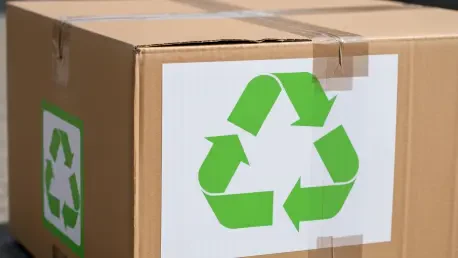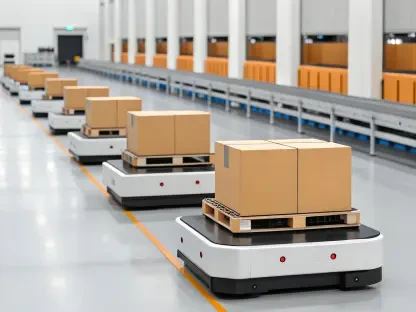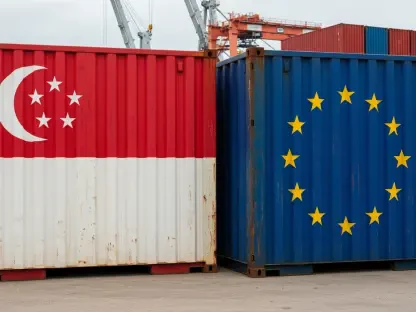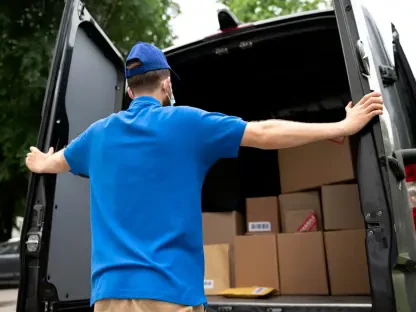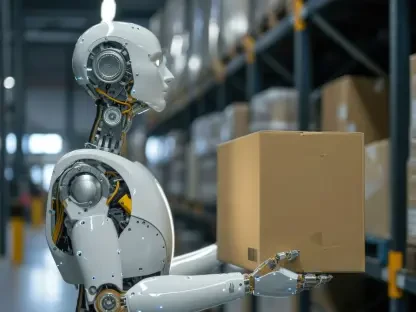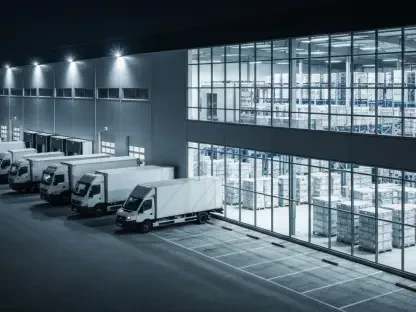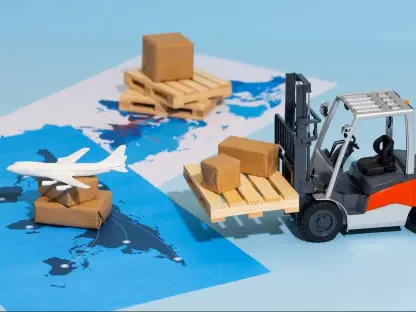The Urgent Shift to Sustainable Packaging
In an era where environmental impact weighs heavily on industrial practices, the packaging sector faces a staggering challenge: over 40% of global plastic waste comes from packaging alone, much of it single-use and non-recyclable, underscoring a pressing need for transformation in how goods are protected and transported. As regulatory pressures mount and consumer expectations pivot toward eco-conscious solutions, the industry is compelled to innovate, seeking technologies that balance efficiency with environmental responsibility. This review delves into the cutting-edge advancements driving sustainable packaging, spotlighting the technologies reshaping logistics and industrial operations.
The journey from traditional materials to sustainable alternatives is no longer a niche pursuit but a core imperative. Companies across the globe are investing in reusable systems, biodegradable materials, and digital tools to address waste reduction and compliance with stringent laws. This analysis aims to unpack the performance, practicality, and potential of these innovations, offering a clear perspective on their role in crafting a greener future for packaging.
Core Technologies in Sustainable Packaging
Returnable Plastic Packaging (RTP) Systems
Returnable Plastic Packaging, often abbreviated as RTP, stands out as a robust solution for reducing waste in supply chains. Championed by industry leaders like Exporta, RTP involves durable plastic containers and pallets designed for multiple uses, slashing the need for single-use materials. The technology’s economic benefits are evident in lowered costs over time, as businesses reuse assets instead of constantly replacing them, while environmentally, it significantly curtails landfill contributions. Its adaptability across sectors like automotive and retail highlights a practical edge in logistics.
Beyond cost and environmental gains, RTP enhances supply chain efficiency through standardized designs that streamline handling and storage. The durability of these systems ensures protection for goods during transit, minimizing damage and associated losses. As adoption grows, the technology proves its worth in high-volume operations where resilience and repeatability are critical, setting a benchmark for sustainable practices.
Eco-Friendly Material Innovations
Parallel to reusable systems, advancements in eco-friendly materials are redefining packaging possibilities. Companies such as Springpack are at the forefront, developing alternatives like biodegradable films and compostable wraps that degrade naturally without harming ecosystems. These materials target the reduction of plastic waste while maintaining the protective qualities needed for diverse products, from food to industrial components.
The impact of these innovations lies in their alignment with customer sustainability goals. By integrating plant-based polymers and recycled content, such materials lower carbon footprints and support circular economy principles. Their application in real-world settings, including retail and e-commerce, demonstrates a viable path to greener packaging without compromising on performance or safety, marking a significant stride in material science.
Technological Breakthroughs in Packaging Processes
AI-Driven Production Optimization
Artificial Intelligence is revolutionizing packaging production, with pioneers like Mosca GmbH leading the charge. Recognized for their innovative approach, their AI systems optimize manufacturing processes by predicting demand, minimizing material overuse, and enhancing energy efficiency. This technology reduces resource waste during production, aligning seamlessly with sustainability targets while boosting operational throughput.
The precision of AI allows for tailored solutions that adapt to specific packaging needs, whether for delicate goods or heavy-duty loads. By analyzing vast datasets, these systems fine-tune machinery settings in real time, ensuring minimal downtime and maximum output. This not only cuts costs but also positions companies to meet environmental standards with greater ease, showcasing AI as a transformative force in the sector.
Digital Tools for Transparency and Compliance
Digital innovation extends beyond production into transparency and regulatory adherence with tools like Mosca’s Digital Load Pass. This technology provides a digital record of load security and packaging details, aligning with upcoming mandates such as the Digital Product Pass. It ensures traceability throughout the supply chain, offering stakeholders clear insights into a product’s journey and compliance status.
Such digital solutions foster trust among consumers and regulators by documenting sustainable practices and material origins. They also streamline audits and reporting, reducing administrative burdens for businesses. As regulations tighten globally, these tools are becoming indispensable for maintaining market access and demonstrating commitment to environmental accountability.
Market Trends and Industry Dynamics
The sustainable packaging landscape is shaped by vibrant industry engagement, as seen at events like London Packaging Week, which recorded a 15% rise in attendance with thousands of visitors and exhibitors. This surge reflects a collective drive to explore new technologies and business opportunities despite economic headwinds. The event underscored a unified focus on sustainability as a competitive advantage, pushing collaboration across the value chain.
Consumer demand for eco-friendly options continues to accelerate innovation, compelling companies to rethink traditional models. Economic uncertainties, while challenging, have spurred creative partnerships and investments in scalable green technologies. This dynamic environment suggests that sustainability is not just a trend but a fundamental shift, influencing everything from material choices to digital integration in packaging strategies.
Practical Applications and Operational Impact
Sustainable packaging technologies are proving their mettle in real-world scenarios, with reusable systems being deployed in industries ranging from manufacturing to food distribution. These solutions withstand rigorous conditions, ensuring goods remain secure in challenging environments like loading bays or uneven terrain. Their versatility addresses diverse operational demands, reinforcing their practical value.
Complementing these systems are ergonomic tools such as Kite Packaging’s newly introduced sack trucks, designed for heavy load handling with capacities up to 200kg. Featuring durable builds and pneumatic tires, these tools enhance worker safety and efficiency in industrial settings. Their integration with sustainable packaging solutions illustrates a holistic approach to operational excellence, prioritizing both environmental and human factors.
Challenges in Scaling Sustainable Technologies
Despite the promise of these innovations, significant hurdles remain in widespread adoption. High initial costs for reusable systems and eco-friendly materials often deter smaller enterprises, creating an uneven playing field. Technical challenges in scaling production to meet global demand further complicate the transition, requiring substantial investment in infrastructure and expertise.
Regulatory landscapes add another layer of complexity, as compliance with varying international standards can strain resources. Industry stakeholders are actively addressing these issues through advocacy for supportive policies and collaborative research into cost-effective solutions. Overcoming these barriers is crucial to democratizing access to sustainable technologies and ensuring their long-term viability.
Future Horizons for Packaging Technology
Looking ahead, the trajectory of sustainable packaging points to exciting possibilities in material science and digital integration. Breakthroughs in fully biodegradable composites and smart packaging with embedded sensors could redefine industry standards within the next few years, from 2025 to 2027. These advancements promise to enhance both environmental impact and user experience, driving deeper market penetration.
Regulatory frameworks are expected to evolve, potentially offering incentives for green innovation while enforcing stricter waste reduction targets. The economic viability of sustainable solutions will likely improve as adoption scales and production costs decline. This forward momentum suggests a future where packaging not only protects products but also preserves the planet, aligning industrial growth with ecological stewardship.
Reflecting on the Sustainable Packaging Evolution
Looking back, the review of sustainable packaging technologies reveals a sector that has embarked on a transformative path, driven by necessity and innovation. The standout performance of RTP systems, eco-friendly materials, AI optimization, and digital transparency tools highlights a multifaceted approach to tackling environmental challenges. Each technology has demonstrated unique strengths in enhancing efficiency and reducing waste, painting a picture of an industry committed to change.
As the next steps unfold, the focus shifts to actionable strategies for broader implementation. Industry leaders need to prioritize partnerships that lower cost barriers, while policymakers are urged to craft frameworks supporting innovation over compliance burdens. Investing in education and awareness could further bridge the gap between technology and adoption, ensuring that sustainable packaging becomes the norm rather than the exception in global logistics.
